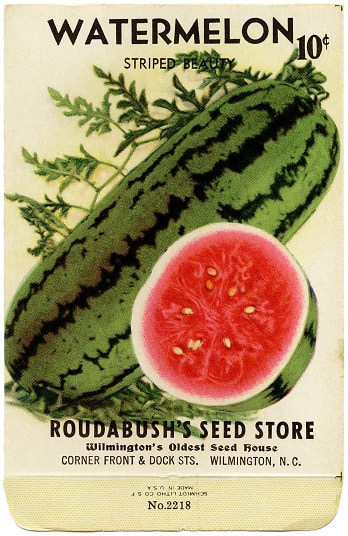|
Who’d a thunk that the Kalahari desert could have given us the watermelon. Well that is, in fact, where our sweet, rich melons call the home place. Okay, it did take millennia to mature into the juicy summer fruit we know and savor today. It was initially prized for its ability to store clean water and was used to feed livestock more than family, due to its distinctly bland to bitter flavor. That was long ago. It was so long ago that it had metamorphosed into a refreshing and satisfying table treat long before King Tut took the seeds into the hereafter with him. Many have suggested that watermelon seeds were first brought to the Americas by slaves. Records indicate, however, that the migration of the watermelon occurred earlier. It was the usual spice and silk traders who took it east to Asia, while it was the Moors who brought it north to Spain. From there, the Spanish were responsible for taking the watermelon west to the Americas. From Central and southern North America the cultivation of watermelon spread widely across the western hemisphere. It was introduced to the pilgrims in Massachusetts as early as 1629 by the Native Americans of the area. Watermelon has been commercially farmed in Connecticut since 1747. Amelia Simmons, in her seminal “American Cookery” of 1796, recorded watermelon recipes homemakers. In the southern United States, the pickled rind of the watermelon is still a popular condiment for grilled and barbecued meats. Mark Twain is quoted as saying that when one has tasted watermelon, one knows what angels eat. Some of us are content with simply eating watermelon directly from the rind. We have watermelon eating contests to see who can consume the most, the fastest. We hold watermelon seed spitting contests to determine who can spit the projectile the longest distance. We even have watermelon carving contests to see who can carve the most beautiful, the funniest, the most whimsical watermelon. Then we have the watermelon record holders. Chris Kent of Tennessee still holds the world record for growing the largest watermelon, which weighed 350.5 pounds, in 2013. Richard Lefreve holds the world’s record for eating 11.5 pounds of watermelon in 15 minutes. Lee Wheelis set his world record in 1998 for spitting a watermelon seed 68 feet, 9⅛ inches. The real point is that now is the time of this luscious fruit. Our market offers watermelons big and small, long and round, red and yellow. There are a number of watermelon recipes on our website if you’re sated with the obvious, including Watermelon and Feta Salad and a Greek-Style Watermelon Salad. Today’s offering is a departure in that it puts a bit of bite into the sweetness of the fruit though it remains refreshing. It is called Watermelon Latino combining sweet and tang lusciously.
0 Comments
Leave a Reply. |



